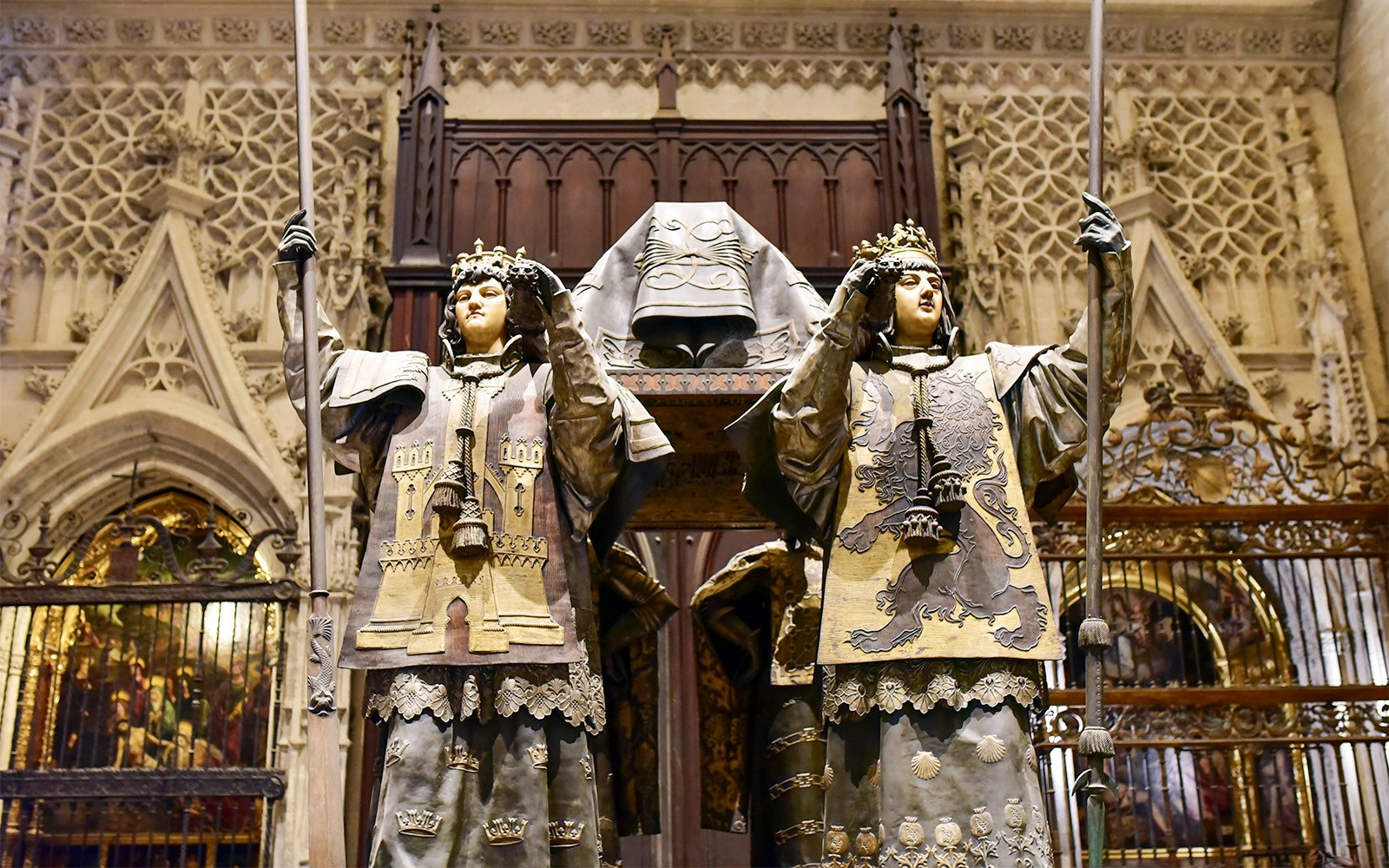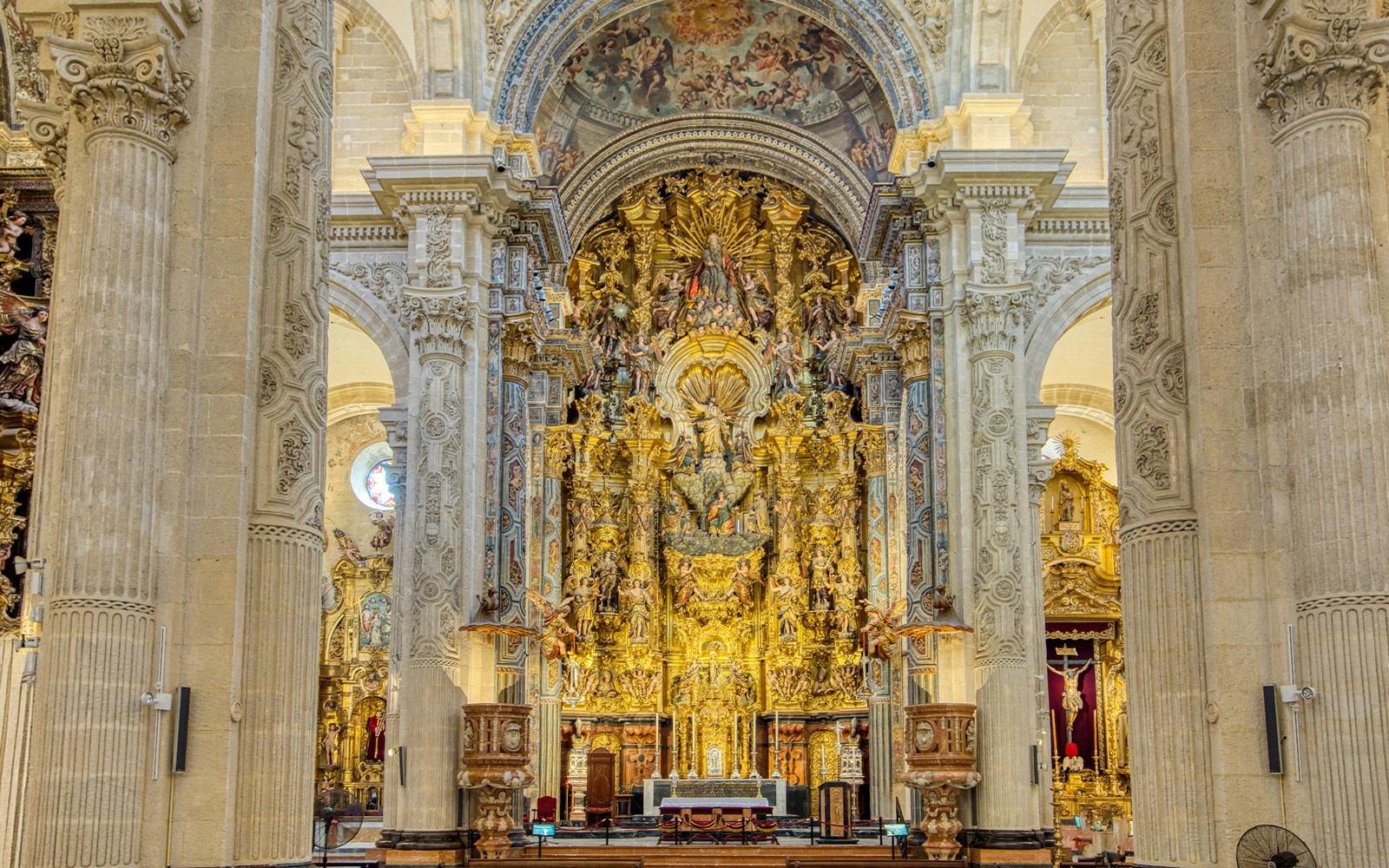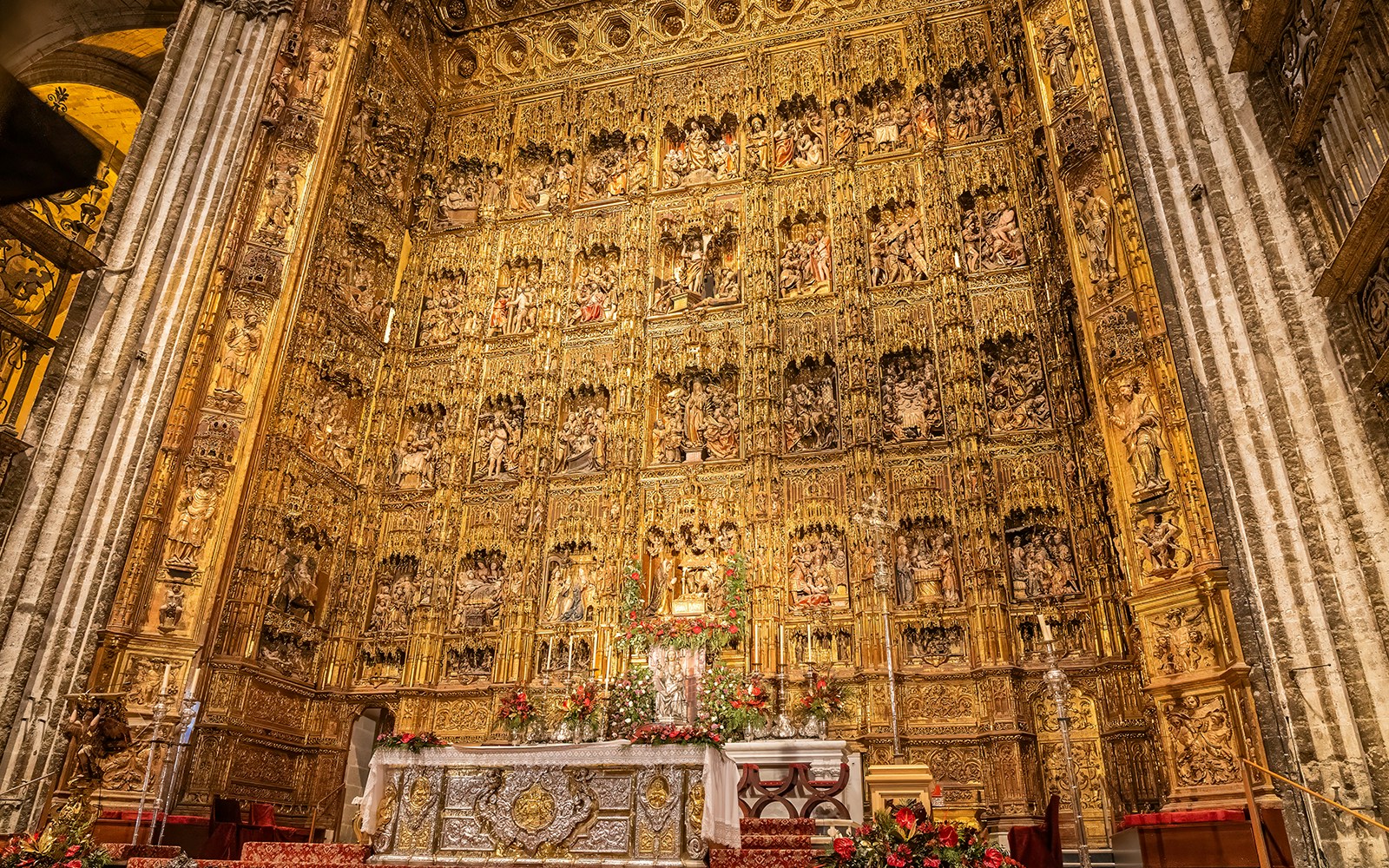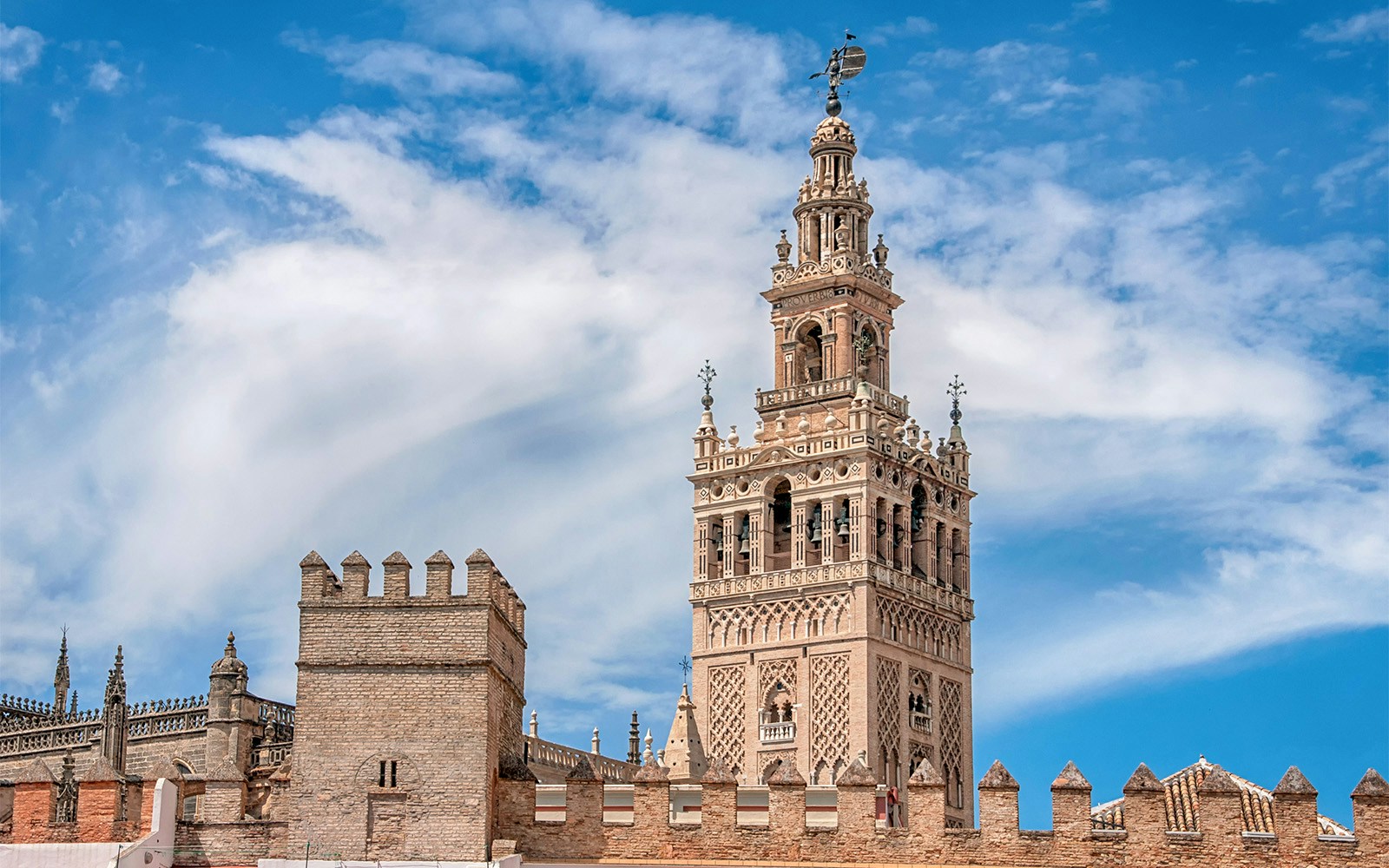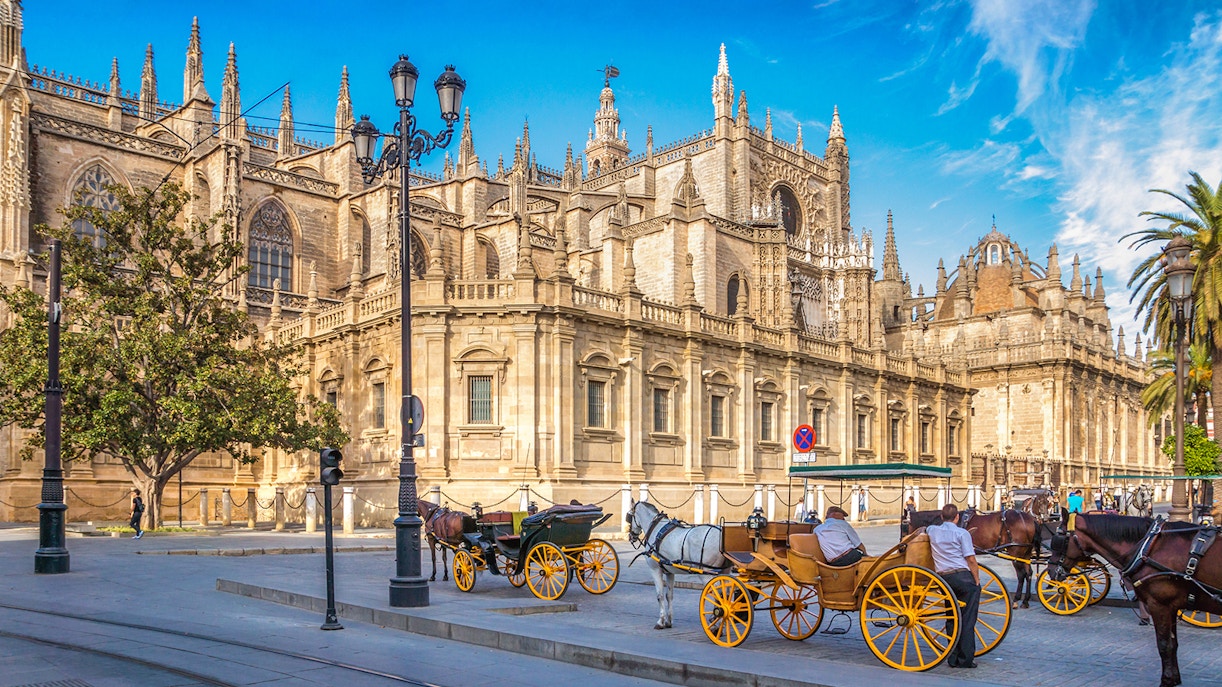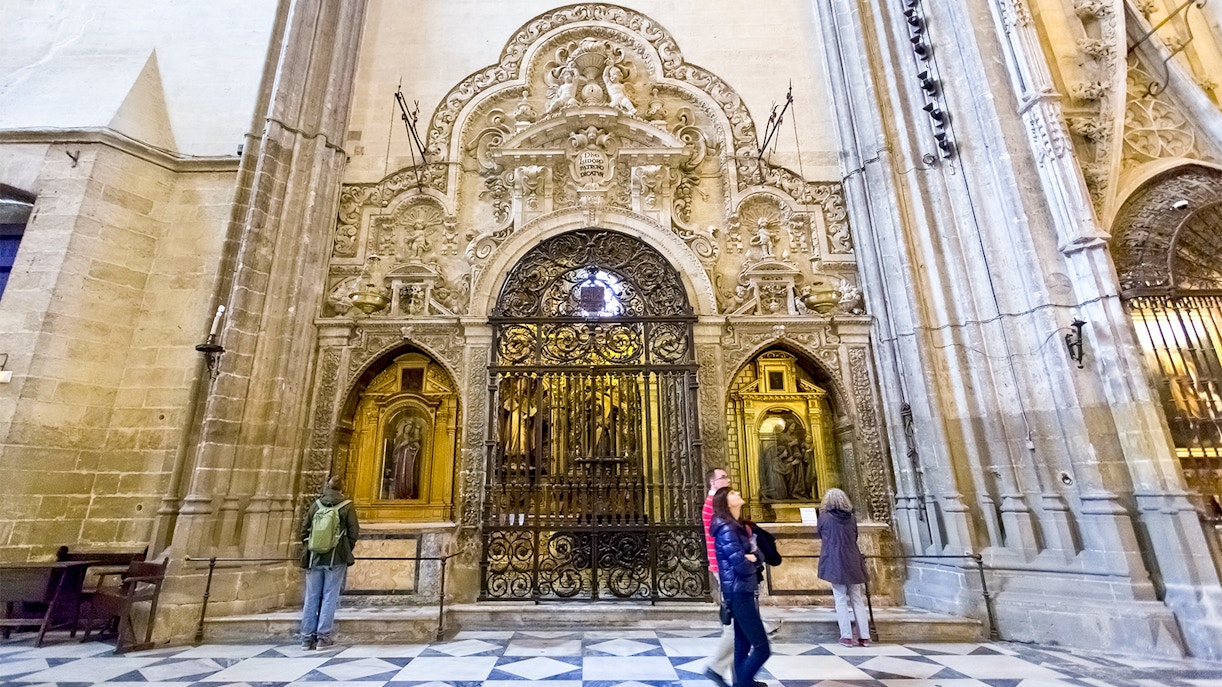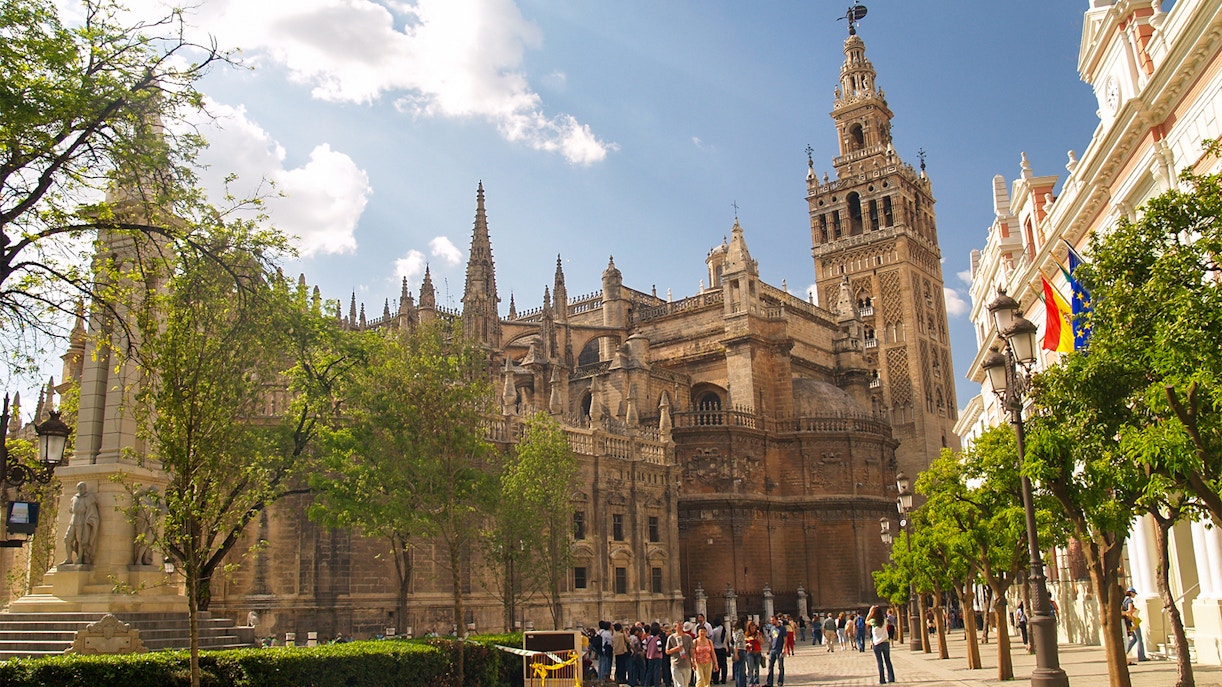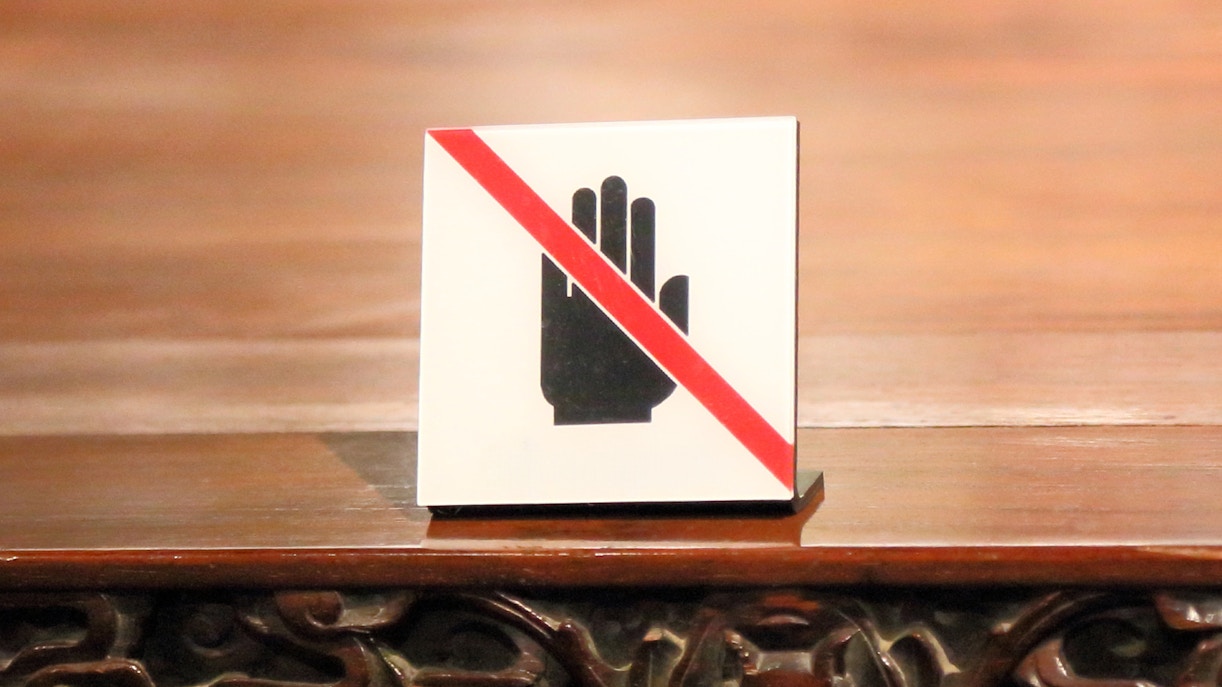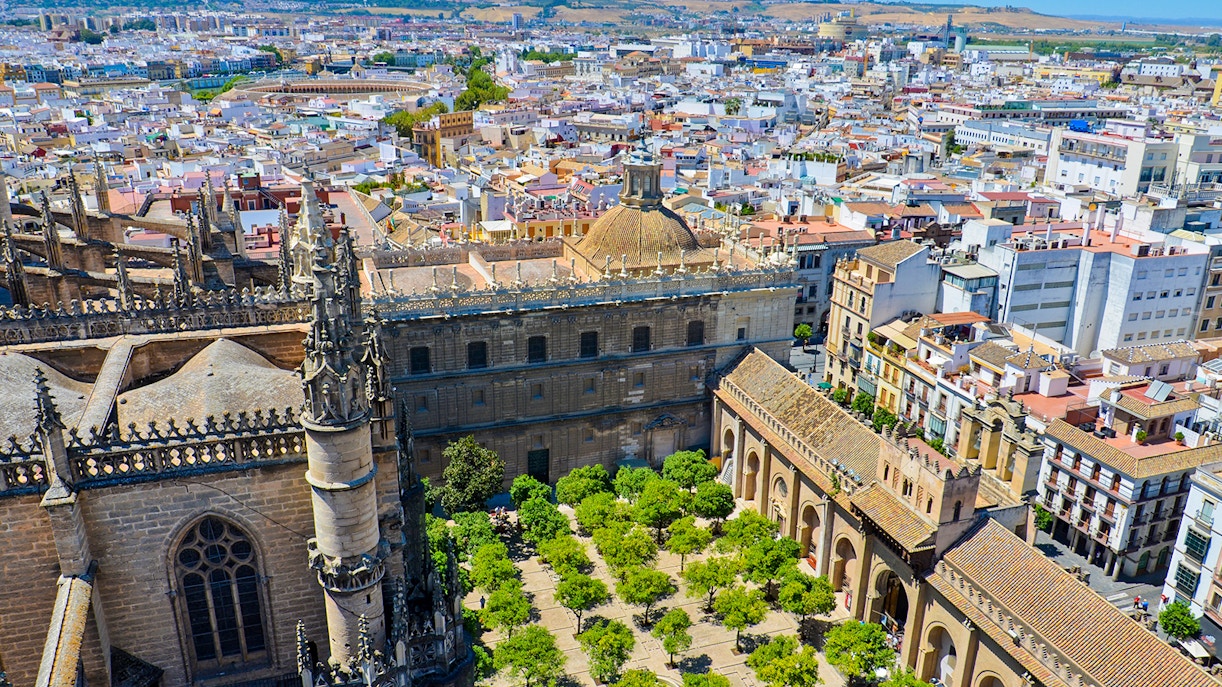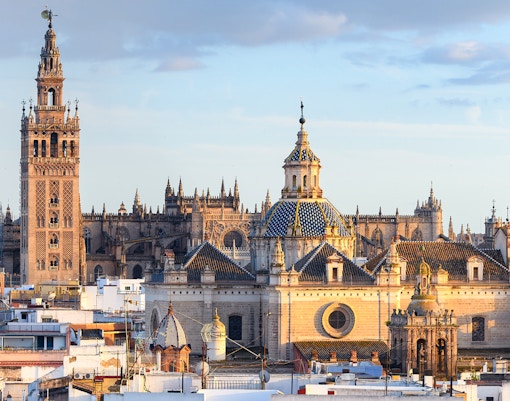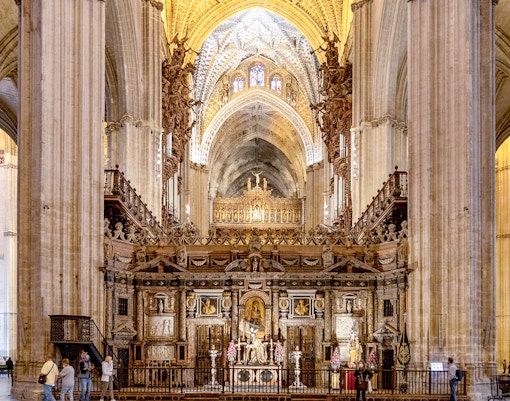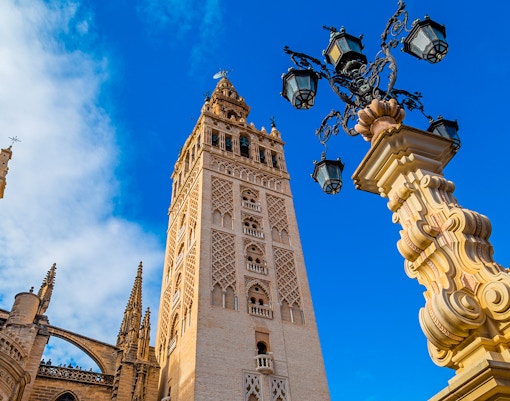Built on the site of a former Almohad mosque, the Seville Cathedral was built between 1402 and 1506 after the mosque was demolished. Step inside and you’ll see a blend of Seville’s Moorish past and the Christian influences after it. Its design kept taking shape even after, particularly in 1511 and 1888 when the central dome fell victim to two major earthquakes in Iberia.
Why go inside Seville Cathedral?
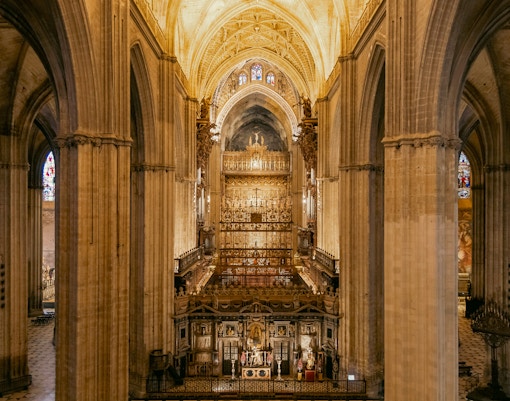
A living example of Spanish history
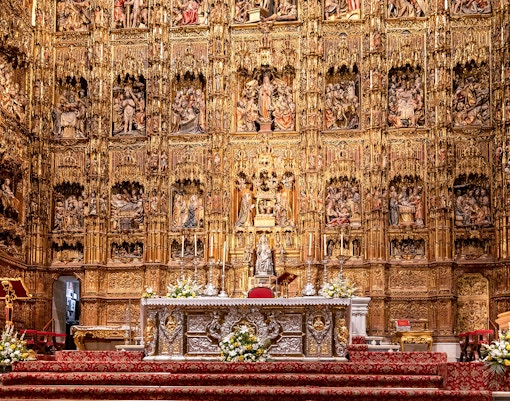
Palatial in every sense
The Seville Cathedral isn’t just big—it’s colossal. As the world’s largest Gothic cathedral, it dwarfs the Notre-Dame in Paris, with over 80 chapels and the largest wooden altarpiece on Earth. This altarpiece, called the Retablo Mayor, features intricate gold-leafed work that depicts the life of Christ.
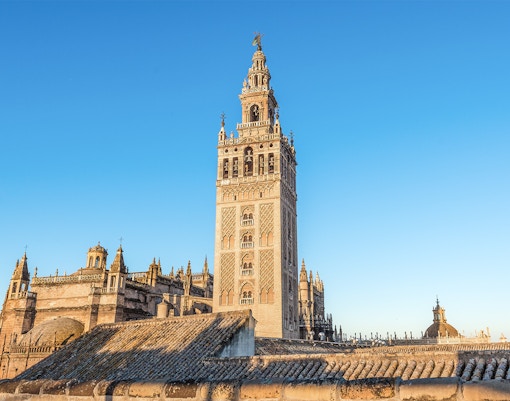
Scale the cathedral’s bell tower
One of the cathedral’s unmistakable attractions is the La Giralda, which is its 104-meter-tall bell tower. The tower reflects the very same blend of Moorish and Christian architecture that the cathedral is known for, besides leading up to stunning views of Seville’s historic capital. What makes it unique is that you ascend it via a series of ramps - not stairs, which you commonly see in other bell towers.
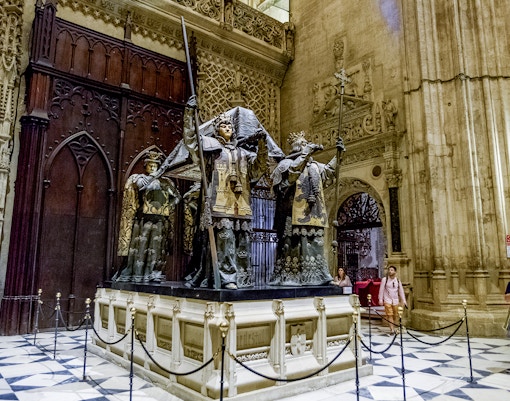
What to prioritize inside Seville Cathedral
- Christopher Columbus’ tomb: The site of much debate and scrutiny, the tomb of this Italian explorer is a must-see.
- The Retablo Mayor: The world’s largest Gothic altarpiece, this gold-leafed structure features biblical scenes with unmatched detail.
- The Treasury and Sacristy: Marvel at a dazzling collection of religious artifacts, including jeweled monstrances, vestments, and relics displayed in lavish rooms.
